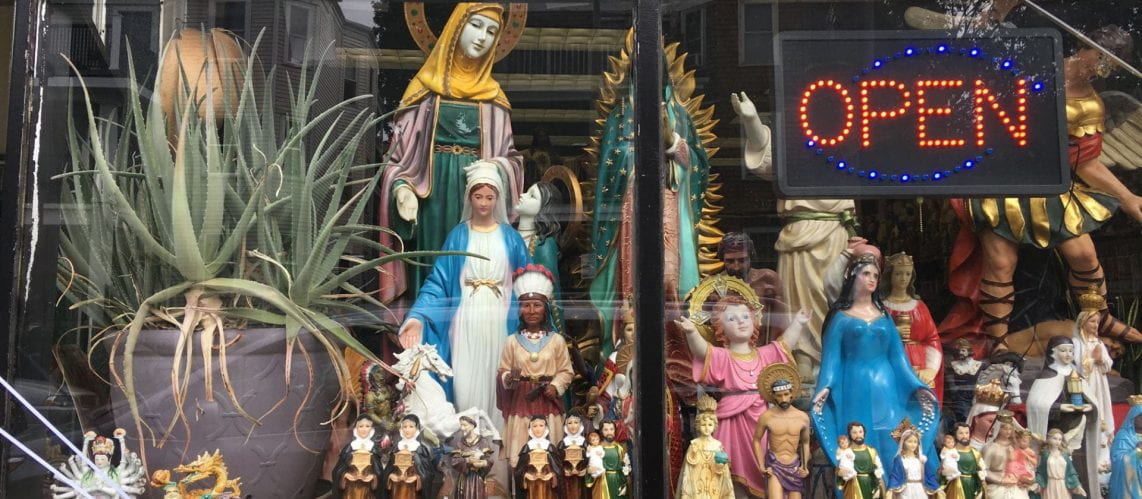By Lauren R. Kerby
Lauren R. Kerby is the religious literacy specialist for Religion and Public Life at Harvard Divinity School, as well as a lecturer on religious studies at Harvard Divinity School and Harvard Extension School.
This time of year, teachers and students alike may be in need of some light-hearted fun with an educational purpose. Our religious literacy-themed Scattergories game is here to help!
We recommend reviewing the key ideas in religious literacy section below with students before beginning to play. These key ideas will be the categories used in the game.
Key Ideas in Religious Literacy
Religions are internally diverse. Within religious traditions, we have large-scale formal divisions. For instance, in Christianity we have Protestant, Catholic, and Orthodox branches, among many others. Within those branches are other kinds of differentiations along sectarian or denominational lines. But internal diversity also refers to small-scale differences that are just as important: two communities within the same branch may practice their distinctive traditions in different ways. Women may veil differently, or not at all. Kosher laws may be interpreted in a variety of ways. One church may sing the traditional songs sung by generations before them, while another prefers modern compositions.
Religions change over time. Religions are not monolithic, static things; time passes, and new opportunities, constraints, and challenges arise. People migrate to new places, and consciously and unconsciously adapt their practices to their new environments. New technologies emerge, and religious communities must decide how to engage with them. New political pressures or restrictions may encourage or even force religious communities to rethink the core tenets of their tradition.
Religions are embedded in culture. Too often, we in the West especially imagine religion to be a separate, private thing. But religion is not contained within the pages of a sacred text or the four walls of a sanctuary. Religion is interwoven with all other aspects of society, including the state, the market, and education. This is in part because religious people bring their religious identities with them as they live all parts of their lives. It is also because religious institutions that participate in public discourse. They also interact with government, the media, the market, healthcare systems, and schools. And religious narratives and ideas deeply shape our values and how we debate them, again, regardless of whether the “we” in question is explicitly religious or not.
How to Play
For each round, the game leader will choose a category from the Key Ideas section and assign it a letter of the alphabet. In small groups or breakout rooms, players will list examples of that category that start with that letter. Each team should list as many examples as they can in five minutes. When time is up, the class will reconvene as a large group to score each teams’ results for that round.
During the scoring, the game leader will ask a representative from each team to read their list. The team should be prepared to defend the inclusion of any item on their list upon request from the game leader or another player.
The team with the most points at the end of the game wins exciting prizes and bragging rights!
Scoring
- One point per term
- One bonus point for any term that includes alliteration (consecutive words starting with that letter)
- Two bonus points to the team with the most obscure or surprising example that disrupts assumptions, as determined by the game leader.
- Additional bonuses can be determined by the game leader before playing.
Examples
Key Idea/Category: Internal diversity
Letter of the alphabet: S
Possible answers: Sunni, Shia, Sufi, Salaafi, Sabbath, Salvation Army, Siddhartha Gautama, Second Baptist Church, schism, sola scriptura, sacraments, salvation, Second Great Awakening, separation of church and state, Southern Baptist Convention, Seventh-Day Adventists, Sojourners, Scientology, saints, social gospel, Swami Vivekananda, sangha, Shingon Buddhism, samsara, sand communion, Santeria
Key Idea/Category: Change over time
Letter of the alphabet: R
Possible answers: Reformation, revolution, reincarnation, Religious Right, religious liberty, religion wars, rabbinical Judaism, Reform Judaism, restorationism, rulers, Roger Williams, roads, Rome, Romans, rebellion, recording, radio, reading, Renaissance, riches
Key Idea/Category: Embedded in culture
Letter of the alphabet: H
Possible answers: hospitals, hotel Bibles, halal restaurants, ham, heads of state, halls of power, high schools, homeschooling, heartland, health and wellness, House of Representatives, HOTEP, Hark the Herald Angels Sing, Happy Hanukkah, Happy Holidays, history museums, hell houses, Halloween, Hindutva, Hindu nationalism, head coverings
Hint: Almost anything can be included in the list! The key is that students have to know the category well enough to be able to defend the term they want to include.


